Text
It has been a LONG while since I have posted here! This calls for Gary Numan.
In other news, I plan to post more to this blog now that it is summer!
#lego robotics#gary numan#cars#the mighty boosh#synthpop#sciencecore#stem#scienceblr#science side of tumblr#stemblr#robotics
5 notes
·
View notes
Text

4 Eyed Fish🐟👀👀
Image source
Just a quick post to share with you guys the funky anableps fish!
I encountered this little friend in my biology textbook and it is quite the spectacle--or rather, 4 spectacles. As can be seen in the photo this fish actually has 4 eyes!
Being a surface lurker, this fish needs to have vision adapted to both air and water climates. As it turns out, the gene expression on the top of this friend's eye codes for slightly different visual proteins than the bottom half of the eye, allowing it to capture slightly different wavelengths and overall giving it a better visual experience.

Of course, all of its cells have the same DNA--but the way it is expressed is different.
Hope you learned something new!
#science side of tumblr#science#sciencecore#biology#animals#cool science#weird science#fish#cool animal facts
282 notes
·
View notes
Text
Tropical Cone Snail🐌

Hey guys! It has been awhile. Today I wanted to share with you a funky little guy called the the Tropical Cone Snail (arguably the coolest type of snail).
With such a cute-looking little snail shell you may be surprised to hear that the Tropical Cone Snail's venom is one of the deadliest concoctions in the animal kingdom. The geography cone is one of the deadliest cone snail species, housing over 100 toxins in its little body with no current antivenom developed.
The venom's potency comes from the fact that its little proboscis secretes neurotoxins, toxins that (you guessed it!) affect the nervous system. The snail attacks primarily its prey's ability to send chemical signals in its neurons which, as you can imagine, would be quite bad for a little predator (namely a fish) trying to swim to safety. Put in a more scientific manner, the "cone snail toxins cause paralysis by blocking signal transmission at the synapse between neuron and muscle."
In terms of the specific toxins the snail uses, (for the nerds among tumblr) Omega-conotoxins "plug the calcium channels", alpha-conotoxins "plug to receptors on the muscle site", and psi-conotoxins "plugs the ion channel of the receptor." So although neurotransmitter are still released by the fish but the muscle cell can no longer receive signals (SOURCE: biointeractive.org). If muscles cannot be contracted the prey is paralyzed and thus cannot escape the snail.
Hope you learned something new!
13 notes
·
View notes
Text
New podcast about electronics for those interested!
youtube

6 notes
·
View notes
Text
Weird Science Wednesday🧪
Cyborg Speculation⚙️
This past Saturday I did a thing I'm sure many of you will scold me for: I watched Terminator for the first time. Yes, I know, I am fantastically late to this franchise and will admit I wish I would have watched it sooner. But between the explosions, car chases, and weird love-affairs with photographs, my side-passion as a film critic resurfaced.
Is T-800 actually a cyborg?

Okay, I know anyone that follows me is going to question how on Earth this relates to any genuine science. But, if you'll stick with me here, I swear it ties into some neat modern research into the field of biorobotics.
But first, for our highly scientific cyborg definition debate, let's first consult a highly reputable source - the Terminator fandom wiki:
"The T-800 Terminator was Skynet's first cybernetic organism, with living tissue over a hyperalloy endoskeleton"
This is the part that got my (non-cyborg) mind-gears reeling. When I think of cyborgs (AKA cybernetic organisms, as the wiki says) I typically think of implantations. I think of things like Rhys from Borderlands with their awesome ECHO eye implant. I think of Cyborg from Teen Titans. I've even been convinced that the prosthetic-wielding population has the right to the term. But machine turned man?

Cyborg Noodle from Gorillaz
I cannot help but be a bit of a skeptic in trusting the Terminator wiki's definition of a cyborg. After all, cyborgs are no long solely a thing of science fiction. So, what actually is considered a cyborg?
Here's what the definition Vocabulary.com gives to try and soothe us questioning nerds:
"An organism that is partly mechanical and partly biological is a cyborg."
So, by this logic, even though T-800 was not initially alive in any form, the fact that they harbor living tissue makes them a cyborg. They're both biology and machine. This may have been obvious to most people who watched the film, but the fact that a robotic skeleton with living cells smeared on top could meet the cyborg classification somewhat blew my mind.

Number 5 Alive?
Now, if you weren't aware, the act of trying to mesh living cells with technology is really not a new phenomenon - it isn't even all fictional. In 2006 "European researchers...developed "neuro-chips" in which living brain cells and silicon circuits are coupled together". We've even made robots that operate using "300,000 rat neurons" whose "signals...allow the robot to steer left or right to avoid objects in its path."
In both these instances, the machine was developed first and then we added living stuff to it. While speculative, an article from 2017 cites "two scientists from Oxford University [who propose] that we use humanoid robots to grow engineered tissues." According to this definition, all of these instances could be classified as cyborgs.
Now, even if organ-harboring robots were to become a reality my mind would not leap to T-800 tracking down Sarah Connor. But some may be surprised at the extent of non-speculative experimentation we have done in this field. In 2018 researchers in Tokyo wanted to incorporate living tissue into their robot since inorganic materials proved less flexible. To do this, they grew muscles for a robot by layering "hydrogel sheets filled with myoblasts—rat muscle cells—on a robotic skeleton." That sounds oddly familiar...

For much the same reason as the Tokyo researchers, the U.S. Army Research Laboratory as of earlier this year is "envisioning is growing muscle tissue in a lab, then connecting that tissue to robotic joints in place of traditional mechanical and hydraulic actuators."
For me, it is incredibly fascinating to think that not only are robots with living tissue technically considered cyborgs - but we already have them. The ethical question originates in whether or not we should continue to combine biology and mechanics in such a way.
What are your thoughts on experimentation with robots and living tissue? Is it nothing to fear? Is it everything to fear? Is it even to be classified as a cyborg? Let me know!
7 notes
·
View notes
Text
youtube
Here's a podcast from a few days ago!
1 note
·
View note
Text
youtube
This is pretty neat! In summary this guy Spencer Silver created a poopy adhesive (it was fairly weak) and after years of trying to find a use for it, a coworker (Arthur Fry) was like "yeah dude, how about a removable book mark that doesn't damage the page?"
3 notes
·
View notes
Text
Funky Animal Friday🦎

I recently learned that bearded dragons have a photoreceptive 'eye' on the top of their heads (though it is not technically an eye). It blends in well with their coloring and helps them sense light and dark.
While it may be evident that this is advantageous when speaking
on avoiding predators, there is also much to be said about bearded dragons and prolonged sun exposure. The parietal eye helps the bearded dragon regulate how long they spend basking in the sun versus catching predators. Too much sun exposure can also lead to overheating (something, you know, you might want to avoid).
Evolutionary scientists say that bearded dragons used to have 2 of these parietal eyes yet they eventually fused into one, pretty neat!
(SOURCE: https://totalbeardeddragon.com/bearded-dragon-third-eye/)
49 notes
·
View notes
Text
Funky Animal Friday🦎
Today's animal is: The Colombian Dwarf Gecko
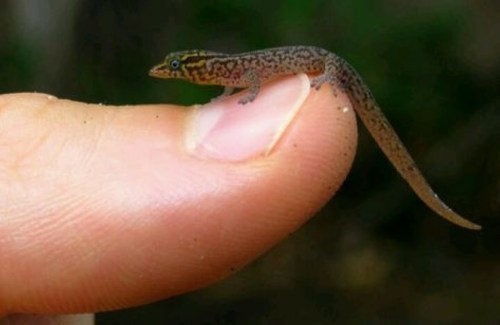
"Growing to be only 2 centimeters in length, you could be forgiven for not even noticing a dwarf gecko if it was sitting on your lap. Nonetheless, this native of Colombia has been around since the dinosaurs, and may have even been around during the time that humans and lemurs last shared an ancestor. Unfortunately, their time seems to have run out, as they appear to be largely extinct—with only remote, and infrequent, sightings being reported." (SOURCE)
They're a cute—and rare—lil fella!
Follow me for more funky animals!
46 notes
·
View notes
Text
Weird Science Wednesday🧪
Hello wonderful scientastic people! Welcome to WSW! Today's question is:
Why do eyes turn red in pictures?
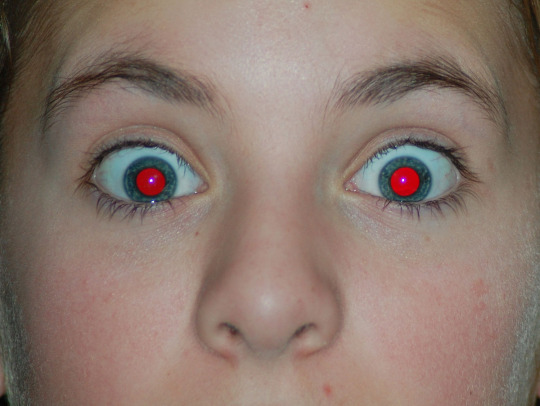
In the age we live in where practically every phone is equipped with a camera, I am willing to bet you've turned that baby on yourself once and awhile. Or, if you want to be a bit more old-fashioned, I am quite sure you have had your photo taken by others...maybe even with...dare I say—flash turned on?
Anyhoo, it is probably some day in December and you run up to mom/dad (or whoever took your photo) only to see a mischievous glare similar to the one depicted in the lovely stock photo above. And it is creepy, and weird, and more importantly—what causes that?
Well, you're not becoming one with the devil (or at least the two phenomenon are not linked). It actually has to do more with the way your eyes respond to a darkened room.

OKAY I'M DONE WITH THE GIFS. SCIENCE TIME.
But first a story. A recollection , if you will.
Think back to one of your first science classes. I mean, WAY back. Did you ever do the experiment where you shut the lights off, turn them back on, and watch your pupils shrink in adjustment to the light? You may have even done this experiment on your own without thinking about it!
Well, here is where we get into the good bits as to why your eyes turn red when you take a photo. When mommy or daddy flashes this wonky pic of you your room/settings are probably quite dark (meaning your pupils are quite dilated). When that camera flashes your eyes hardly have time to react and shrink.
"...the light causes a reflection on the retina which bounces back to the camera. There’s a layer on the back of the eye called the choroid which is full of blood causing the reflection color to be red." SOURCE
I wish to clarify that I indulged in a great evil by quoting that from a ".com" domain and think that Wikipedia is more accurate in saying it is specifically the Fundus that reflects light that is given its 'hue' by the choroid's blood-color.
Yes, you read that correctly.
The FUNDUS.
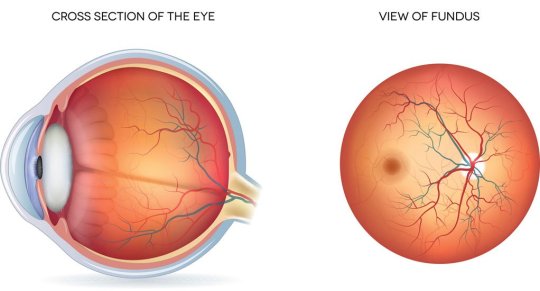
YES the FUNDUS. The part of the eye that's redness is not in all ANIMALS. It is also very FUNdus to study. Why does anatomy have the genuine best words.
OKAY BUT I DIGRESS
You may be wondering if eye color plays a role in all of
this. Well, it does a bit.
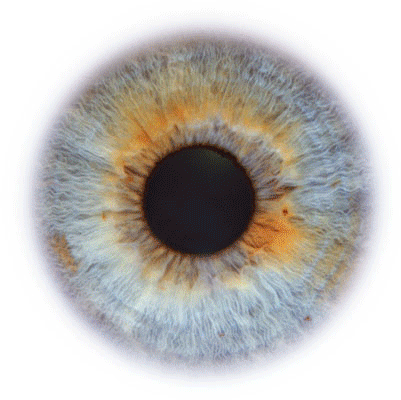
"Light-skinned people with blue eyes have relatively low melanin in the fundus and thus show a much stronger red-eye effect than dark-skinned people with brown eyes." - Wikipedia
So that is really quite cool. This also means that albino humans (and animals!) are more prone to this red-eyed effect due to its correlation with a wonky production of melanin.
But, if this effect is prominent most in albino humans, is having the red-eye effect healthy? Are you normal?
Well—yes actually! Quite so!

This image depicts 3 children with abnormal eye reflections (non-red) which MAY be a sign of an eye condition in kids.
"Research is underway to develop software that can automatically detect leukocoria and other abnormal red reflexes in photographs. Meanwhile, screening and sharing pictures, both online and printed, may lead to early detection that could save vision or a life." (SOURCE).
So, be glad you have photos that make you look demon possessed. It usually means you're a healthy individual.
Follow me for more Weird Science!🧪
29 notes
·
View notes
Text

Twas a success!
youtube
Live Chemistry experiment time!
8 notes
·
View notes
Text
youtube
Live Chemistry experiment time!
#experiment#chemistry experiment#science#livestream#Youtube#science side of tumblr#sciencecore#mad science
8 notes
·
View notes
Text
Funky Animal Friday🐢
This week's animal is the Voeltzkow’s chameleon!
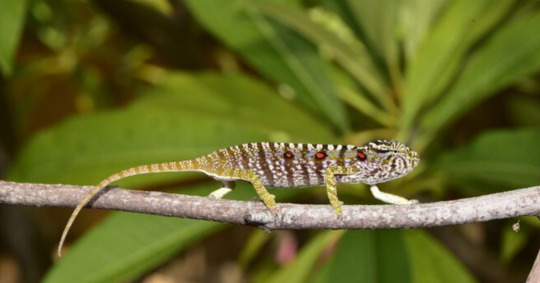
'(Credit: Global Wildlife Conservation / Frank Glaw)
December 2020:
"Scientists recently rediscovered the elusive Voeltzkow’s chameleon during a two-week expedition to Northwestern Madagascar. The last one was seen in 1913, over 100 years ago." SOURCE
I'm a bit late to the party, but I hope you still find this cool!
Follow me for more funky animals!
11 notes
·
View notes
Text
New Science Discord! 🧪
Hello science peeps! I made a new Discord server to chat about various scienceings—come on and join the lab! Everyone is welcome!
#science side of tumblr#science#discord#sciencecore#studyblr#stem#geeks#dinosaurs#chemistry#biology#physics#the whole ordeal
22 notes
·
View notes
Note
15 🐛🐛🐛🐛
VALID RESPONSE. Will do! Time to make some inanimate worms...for science!!
1 note
·
View note
Text
Weird Science Wednesday 🧪

Today we bring in the infamous Stock Photo Scientist™ image to ask the question: why does stress turn your hair gray? Or perhaps more importantly, why does hair change color at all?
Starting with the more intuitive portion of this question, let us shimmy on over to how aging affects the color of our hair. More preliminarily, let's start with how our hair is even colored at all. A little excerpt for you:
"Within each hair follicle are cells, known as melanocytes, that produce one of two basic pigments — eumelanin or pheomelanin, depending on your DNA. Eumelanin is commonly present in black and brown hair, while pheomelanin is found in red, auburn and blond hair." SOURCE
Okay fantastic. So, to summarize, funky cells create pigments according to what their overbearing DNA bosses are instructing.
You have two different flavors of these pigments to sample, either eumelanin (for all of those cool dark haired folks out there) or pheomelanin (for nerdy reddish hair types) or a MIXTURE of each for blondes (a bit oversimplified since most everyone has a mixture to some degree, but stick with me here).
OKAY COOL. FUNKY. SPLENDID. But...uh, what does this have to do with graying hair?

Okay shun my fellow scientists I'm getting there. You know those melanocytes cells I was talking about? As you age they kind of...well...

"When the keratin-producing cells (keratinocytes) die, they retain the coloring from the melanin. When you first start to go gray, the melanocytes are still present, but they become less active. Less pigment is deposited into the hair so it appears lighter. As graying progresses, the melanocytes die off until there aren't any cells left to produce the color." SOURCE
Now, not to disappoint but from my personal research I'm not exactly sure what causes the death of these poor keratinocyte lads. Perhaps there is some evolutionary benefit we don't know about? In any case, it seems like we don't know (if we do-please tell me in the replies!)
BUT (haha, butt) that is (luckily) not the question we're here to answer. The question is why stress impacts this process. And we have new research on that!
Here's what the big lads at Harvard have to say:
"Ya-Chieh Hsu, a cellular biologist at Harvard, and her fellow researchers suggest that stresses that trigger a fight-or-flight response may deplete the stockpile of stem cells in hair follicles that can be converted into pigment cells when new hairs form. [In mice]...“after just a few days, all of the pigment-regenerating stem cells were lost. Once they're gone, you can't regenerate pigments anymore." SOURCE
Poor elderly mice.

So, in essence, the consensus for quite a warm minute was that a similar process must occur in people. As we age or lovely stress interactions occur before our hair zips out of our scalp, the number of stem cells available to regenerate pigments goes down.
But when in scientific research is there only one study?
June 22nd, 2021
A not so long time ago, in an eLife study published from a laboratory not so far away:
So these science peeps gathered up and were like, hey, we're not mice. Maybe our hair follicles jive a little differently than mice. Then they busted out this super awesome term: the mind-mitochondria connection.
Changes in 300 proteins occurred when hair color changed, and the researchers developed a mathematical model that suggests stress-induced changes in mitochondria may explain how stress turns hair gray..."Mitochondria are actually like little antennas inside the cell that respond to a number of different signals, including psychological stress."
So mitochondria adapt to stress! That's cool. But. Why should I/you care? Well, these lads think that some graying of hair might be able to be reversed. In a study with 14 volunteers they found that:
"The investigators immediately noticed that some gray hairs naturally regain their original color, which had never been quantitatively documented, Picard says." SOURCE

This Weird Science Wednesday you learned:
Your funky hair cells (melanocytes) produce two flavors of pigments (eumelanin or pheomelanin) which influence hair color
As you age, Thanos snaps these melanocytes die off
Stress can do some mischevous business and influence this process, too
Harvard scientists studied elderly mice and confirmed this
BUT NUH UH, 2021 BABYS. MICE MIGHT NOT BE HUMANS. WOAH.
Some lads found that the graying of hair may be naturally reduced when stress is lessened
THE RESEARCH CONTINUES
I hope you enjoyed this article!
Follow me for more Weird Science!
131 notes
·
View notes
Text
Which Experiment Should I Do?
Hello scientastic people! I recently uncovered this Discovery chemistry set I got as a gift for Christmas and never used, so I thought, why not pull it out now in the middle of July? There are 29 experiments that come with it, so shoot me a number from 1-29!
I'll likely post this as a series entitled "Eat and Experiment" to my YouTube channel if you want to check it out: https://www.youtube.com/channel/UCWhz68Ig_jROSD50G6DEZRw
(Here is what each number corresponds to for scientists who read):




Thanks so much guys! 🧪
6 notes
·
View notes